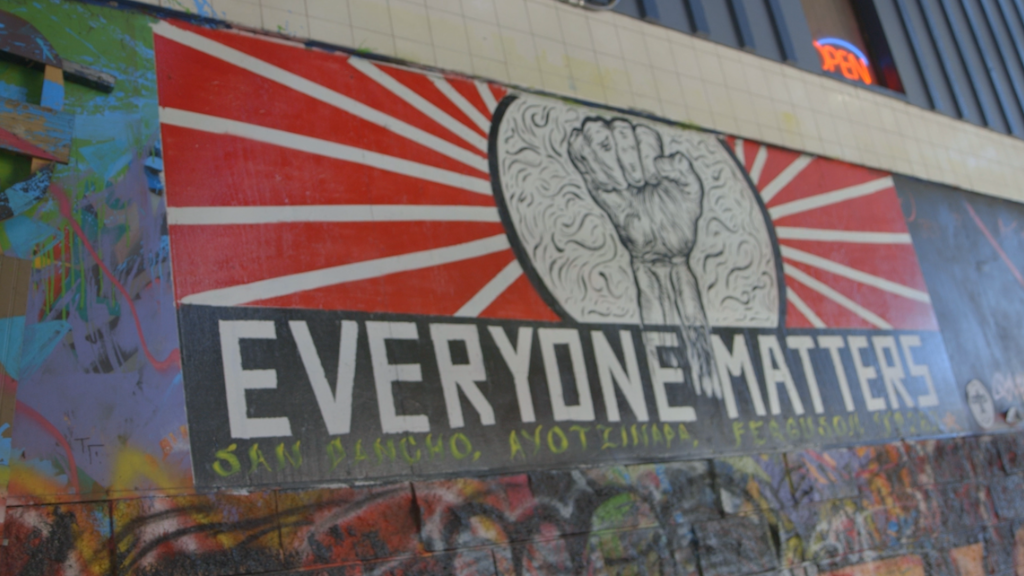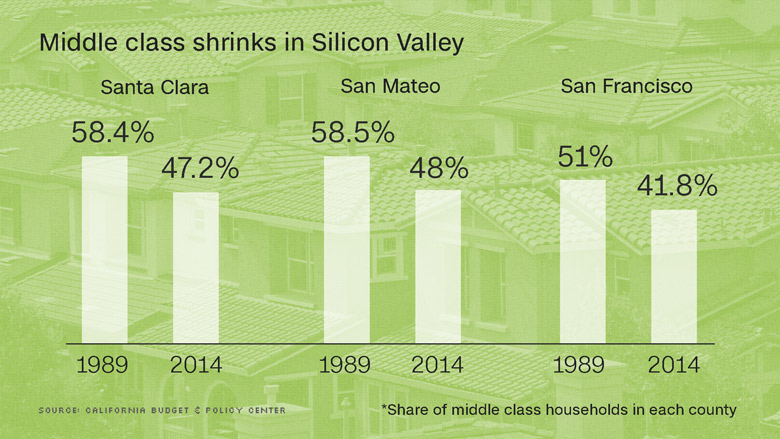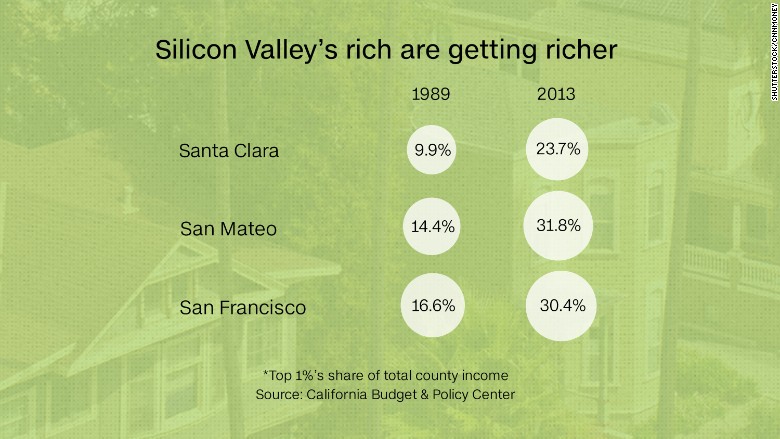
Silicon Valley is far more unequal than it was a quarter-century ago.
Middle class families now make up less than half of households in Silicon Valley's three counties, Santa Clara, San Mateo and San Francisco, according to a new report published by the California Budget & Policy Center, which advocates for low-income families. At the same time, the rich control an even greater share of the region's income.
Some of Silicon Valley's once solid middle class moved up the income ladder, but others slipped down between 1989 and 2014. The shares of lower-income and wealthy households in all three counties expanded during this period.
"In an area that otherwise exemplifies the robust nature of the U.S. economy, [the data shows] there are always underlying challenges that need to be addressed," said Chris Hoene, the center's executive director. He noted that widening inequality and a withering middle class can hurt the region's economic stability and future growth.

Nationwide, the middle class is shrinking, as well. Middle class Americans now comprise less than half, or 49.9%, of the nation's population, according to the Pew Research Center. Both Pew and the California Budget & Policy Center define middle class as having two-thirds to two times median household income, adjusted for household size.
Related: Middle class no longer dominates in the U.S.
Silicon Valley's rich, however, have prospered, resulting in some of the largest income disparities in the Golden State. The region has some of the highest median household incomes in the nation, but that masks how middle class and working class residents are faring.
In San Mateo, the average income of the Top 1% was 46 times that of the bottom 99% of households, the widest gap in California and nearly three times what it was in 1989. The second largest divide is in San Francisco, where the Top 1% earned 43 times that of everyone else. Santa Clara's wealthy earn 30.8 times what other county residents do, the sixth-widest gap in the state.

Household income for the top 20% of residents in the three counties grew far faster than for the state as a whole. This is particularly true in San Francisco, where the top 20% enjoyed a 48.4% hike in household income, compared to 5.1% for their counterparts across California.
Related: The Top 1% haven't recovered yet, either
The region's poorest residents, on the other hand, saw their incomes decline. The bottom 20% in Santa Clara took home 14.5% less, similar to the statewide drop for their peers. The drops in San Mateo and San Francisco were narrower.
While jobs are more plentiful and pay better in Silicon Valley than in other parts of the state, the higher cost of living still leaves many middle class and lower-income residents in a bind.
"Even if you are paid more on the job, you are still falling behind at a faster rate than the state and the nation," Hoene said.


